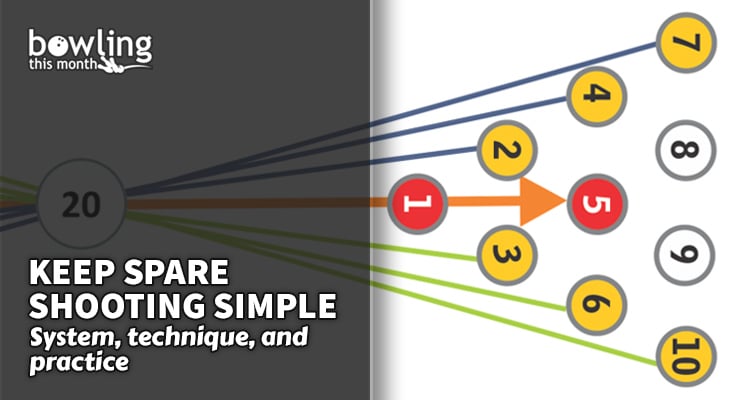Article Contents
- 1. Having a system
- 1.1. What about multi-pin spares?
- 2. Advanced system targeting
- 2.1. 3-6-9 plus or minus 1
- 3. Alignment
- 4. Spare game technique
- 4.1. Spare ball with higher ball speed
- 4.2. Spare ball with less axis rotation
- 4.3. Higher speed, less rotation, no spare ball
- 4.4. What about urethane balls?
- 4.5. Two-handers and spare shooting
- 5. Practice, practice, practice
- 5.1. Challenging yourself in practice
- 6. Spare shooting in competition
Note: This article is only available to Bowling This Month subscribers.
What makes a good spare shooter? Many people will consider it as someone who makes no more than one open per game. At the beginning level, this is a very good goal to have, but you shouldn’t be satisfied with this as you improve. At advanced levels, one missed makeable spare per block of six games is pretty good. By comparison, Walter Ray Williams, Jr. once missed only one single pin in an entire season on the PBA Tour. That is spare shooting at an incredible level.
Spare shooting is by far the simplest part of bowling. This isn’t to say that it is easy for someone to just be a great spare shooter without effort, but once you understand it and learn how to shoot spares, they become easy.
Bowling is a complicated game, and things that are simple should remain simple. Overcomplicating your spares is a sure way to make it harder than it has to be, and many bowlers fall into this trap. The two keys to spare shooting are alignment and targeting. With a system that works and proper alignment, bowlers can almost never miss a spare.
Having a system
As I’ve traveled the world, there are three common spare “systems:”
- No system at all: These bowlers go by feel and simply try to direct the ball toward the pin in some way. It’s not usually very effective.
- The “Frank Sinatra” system: These bowlers do it “their way,” which means they think they’ve got their own special way of throwing spares. This usually equates to an overcomplicated method and no real system at all.
- The 3-6-9 system: The most basic, easiest system that really works when it is being used properly.
Mathematically, the 3-6-9 system could be 3-7-11, but the difference is within a human being’s margin of error anyway, so why bother arguing? Maybe …
Click Here to Read the Full Original Article at Bowling This Month…
